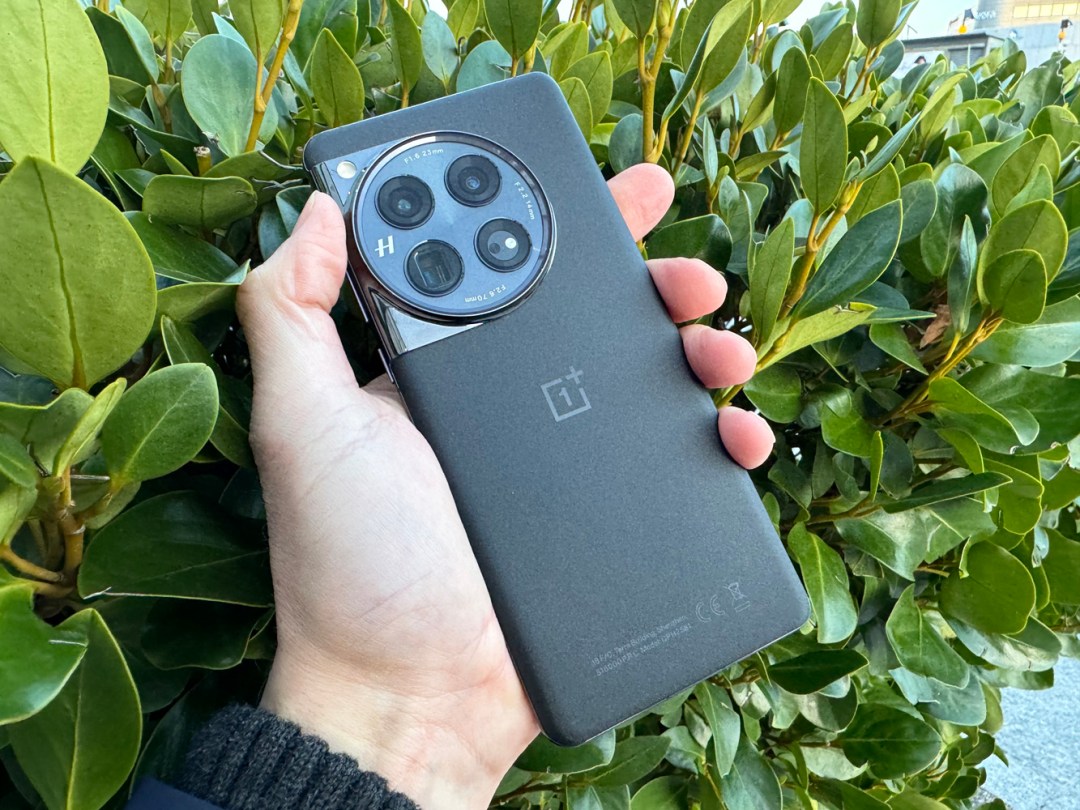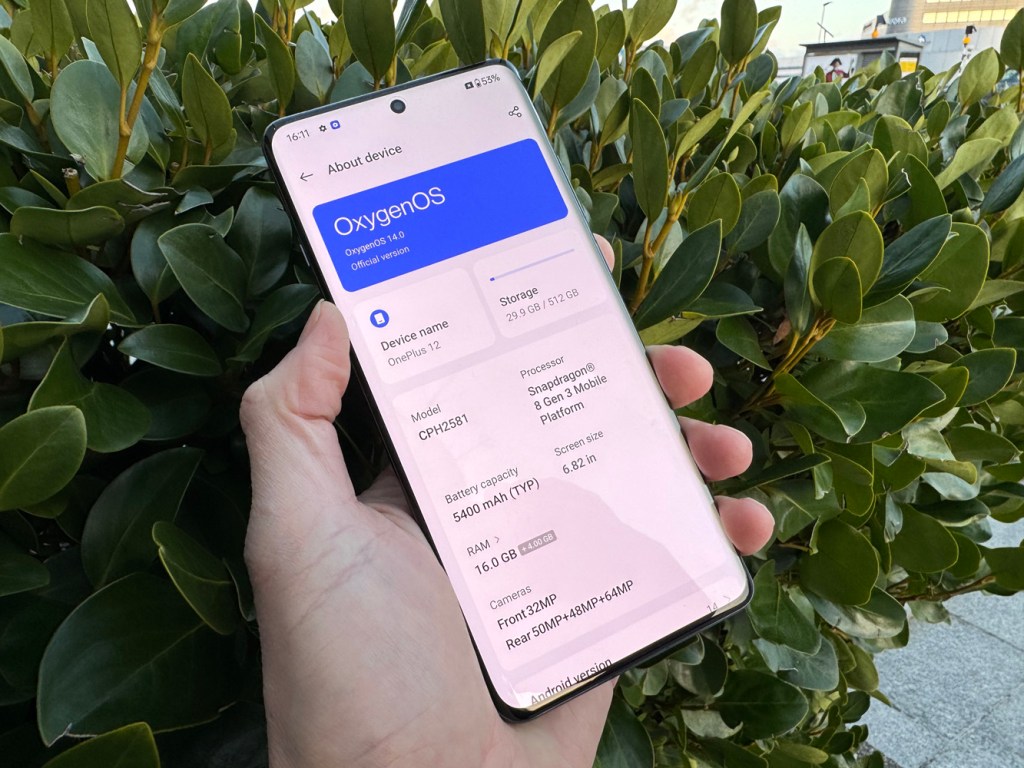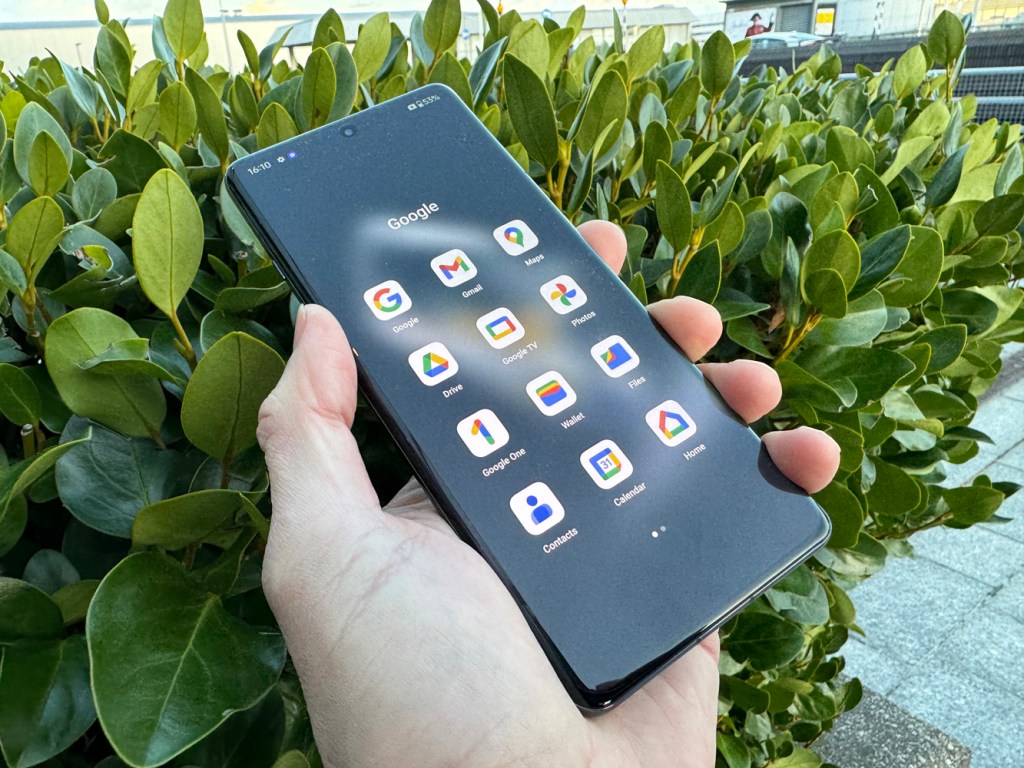OnePlus 12 review: I see some very bright upgrades
The latest OnePlus 12 flagship is here - but does it iterate enough? Short answer: yes

Stuff Verdict
A seriously compelling package thanks to the upgraded camera, powerful core specs and beautiful display.
Pros
- Sony LYT-808 sensor superb
- ProXDR display is epic
- Premium performance
Cons
- Price increase
- Few colour options
- Need a 50W wireless charger
Introduction
We’ve now become used to OnePlus debuting its premier smartphone offering early in the year.
It’s something Samsung has also favoured in recent years with its S23 and now S24 series. So here I am with the OnePlus 12, starting from $799/£849/949 Euros. It’s no longer top of the OnePlus tree though; that accolade belongs to the OnePlus Open foldable that I was impressed by late last year. And it’s also joined by a cheaper version in the form of the OnePlus 12R.
The OnePlus 12 is a little more expensive than the OnePlus 11 it supersedes but it also offers a more, too. As well as hefty upgrades to the core hardware and camera sensors and, in addition to fast 80W wired charging, the 12 now has 50W wireless charging where there was none before. Plus there’s now full waterproofing and other premium upgrades such as Wi-Fi 7, Bluetooth 5.4 UFS 4.0 and USB 3.2 Gen 1 – the latter two for faster write speeds and data transfer.
How we test smartphones
Every phone reviewed on Stuff is used as our main device throughout the testing process. We use industry standard benchmarks and tests, as well as our own years of experience, to judge general performance, battery life, display, sound and camera image quality. Manufacturers have no visibility on reviews before they appear online, and we never accept payment to feature products. Find out more about how we test and rate products.
Design: familiar looks, subtle changes
The design of the OnePlus 12 doesn’t deviate significantly away from what we’ve seen with the OnePlus 10 and 11 – it looks super similar to the OnePlus 11 in particular. There’s a similar circular camera housing to match the OnePlus Open, complete with the now-expected Hasselblad branding. While it looks great, it’s iterative at best. But then OnePlus isn’t unusual in that – everyone is struggling to make their phones stand out from what has gone before.
Once again there’s an emerald green version, but it has a kind of mottled/marble finish this time around. I’d definitely have preferred to see that in the flesh, but OnePlus sent me the silky black version. It looks like it should be almost sticky, yet the finish feels very smooth. It’s almost like silk paint, but it glitters in the light. It’s certainly way better than if it was a glossy piano black with its extreme fingerprint-attracting finish. The rear glass is Corning Gorilla Glass 5 while the front is protected by the super robust Gorilla Glass Victus 2.



OnePlus has now succumbed to the inevitability of giving its phones an IP rating, too. And it’s VERY welcome. This handset is IP65 rated, so will take pretty much everything you can throw at it; it’ll certainly survive a dunking.
Once again the phone has the famed OnePlus alert slider that made a welcome return with the OnePlus 10 Pro. Like the iPhone’s action button/silent slider it’s appealing to be able to flick the phone onto silent when in a pocket or similar. We’re still surprised more Android phones don’t have a physical control for this.
Weight clocks in at 220g, so in terms of 6.8in rivals, it’s slightly lighter than the 233g S24 Ultra (no S Pen, of course) and pretty much matches the 221g iPhone 15 Pro Max. I praised the iPhone’s titanium outer? We’re full of praise here, too. This is a huge phone, yet it doesn’t feel like it. At no point do you feel like you’re carrying around something with too much weight. The weight distribution also seems OK considering the size of the camera hardware.


Display: the brightest of them all
This year’s ProXDR LTPO 2K (3168×1440) display is a slight upgrade in size from last year’s 6.7in window at 6.82in. But it’s a bigger upgrade in other ways. It’s a thing of beauty, with its 510 pixels per inch absolutely popping out at you. It has the now-standard 120Hz dynamic refresh rate and Dolby Vision support. But what you won’t expect is how high it can go at absolute peak brightness – a huge 4500nits. Of course, you won’t get this as a matter of course, but it’s quite remarkable to think this display can reach those kind of levels. OnePlus naturally says it’s the “brightest screen ever seen on a smartphone” as a result.
Interestingly, OnePlus is pushing a technology called Aqua Touch with this phone, designed for more precise touch controls when you’re using it in the rain. I tried this out and it worked fine, but the proof will be in the pudding when I try and call a taxi at 1am in a storm after an ill-advised kebab.



Specs, charging and battery: cool performer
What’s on show here is undoubtedly flagship level, with the recently-announced Qualcomm Snapdragon 8 Gen 3 on board in addition to 12 or 16GB of latest-gen LPDDR5X RAM depending on whether you choose the 256GB ($799/£849/949 Euros) or 512GB ($899/£999/1099 Euros) version of the phone. Qualcomm promises just shy of a third better performance in CPU and GPU performance versus the previous platform.
Coincidentally, OnePlus has also developed a new cooling system for this phone, also coming to the 12R. In terms of the 12 though, OnePlus says a new solution was needed because of the enhanced requirements of the new display and the Snapdragon 8 Gen 3. There’s certainly some interesting tech used here, with a larger surface area to the cooler, smaller coolers near specific components and a new design so that coolant can flow faster around the device.
The battery is a 5400mAh unit that’ll easily get you through a normal day and a little into the next if you’re careful (or using Power Saving Mode). As I mentioned above, it’s capable of 50W wireless charging (a welcome enhancement) in addition to 100W wired charging. That 100W figure is a little below OnePlus’ top performers of the past, but perhaps there is a cost-to-performance trade-off that just wasn’t worth tipping upwards. Even so, it’ll still juice the phone completely in under half an hour, or double that with wireless.
Camera: a superb system
The camera system has been given a serious upgrade this time around with Sony’s latest-gen 50MP LYT-808 sensor previously seen on the OnePlus Open. You can get some stunning shots from this large aperture, 1/1.4in , ƒ/1.6 sensor – it really is terrific and it has OIS as you’d expect. It also means that night and low light shots have drastically improved. When I think back to what the OnePlus 10 was like in even slightly dim situations, this is significantly better. It certainly means that OnePlus is able to compete with rivals on an even playing field, rather than playing constant catchup.











As you can see, the last shot has a watermark – the phone will ask you whether or not you’d like to turn this off when you first start up the camera app.
The 64MP OmniVision telephoto has a 3x periscope zoom in addition to OIS, 6x in-sensor zoom (there are shortcuts for 3x and 6x in the camera app) but can be whacked up to a whopping 120x. The results aren’t actually that bad, but they’re a huge amount better if you use a tripod or can hold the phone steady somehow. Shots on the 3x zoom are really rather excellent and it’s very useful to be able to jump to 3x right away.
Here are the different zoom levels:




And here’s a shot of one angle of the moon at 120x – this was taken without a tripod but braced against a wall to keep the phone somewhat steady.

The 114 degree ultrawide is the 48MP Sony IMX581 also used in the OnePlus 11 and OnePlus Open. As with other ultrawide lenses the usefulness is limited unless you’re too close to an object you need a wider view of. And in our experience that’s quite rare. Sadly it doesn’t have the 1in LYT-900 sensor from the China-only Oppo Find X7 Ultra. Mind you, that Oppo device does take things to the extreme with four 50MP cameras, including two periscope telephoto lenses!
Here’s an ultrawide of the same shot above:

The OnePlus camera Pro Mode has now been renamed Master Mode on this camera and it’s where you can get to grips with the finer details of your images. There’s also more enhancements for the Hasselblad Portrait Mode, giving you two distinct options – 2x 50mm for medium/long portraits and 3x/70mm for close-ups.
Software: going long
As you’d expect at this stage of the year, Android 14 is on board, topped with OnePlus’ OxygenOS. OnePlus has faced some criticism in the recent past as its software side has been merged with parent company Oppo’s ColorOS but it feels snappier than ever and, even though OxygenOS isn’t as distinct as it once was, it still feels like a OnePlus phone rather than an Oppo one.
Software updates are now guaranteed for four years and you also get security updates for all that time too – as you’d expect really. While it feels like a bit of a new frontier for software updates on Android devices, it’s not unreasonable for punters to expect their expensive former flagships to still be working by the time the US comes to its next election after 2024.

OnePlus is also talking up its proprietary Trinity Engine, part of OxygenOS 14. It’s essentially some software optimisations in OxygenOS to manage workloads for heavier multitasking uses such as heavy-duty mobile gaming and rapid app switching and ensures that battery life is kept to a maximum. One thing that OnePlus says it is looking for though this optimization is that the phone should be as fast after several years of use.
As ever the proof will be in the pudding there. OnePlus suggests in its guidance that through these so called ‘vitalization’ technologies it is able to keep the OnePlus 12 going for 30 minutes longer, though beyond a consistently good performance (which you’d expect from any brand new flagship phone of course) this is impossible to test out because of the other hardware changes inside.

OnePlus 12 verdict
It’s true that OnePlus has always been capable of pumping out powerful flagships but there have been one or two things over the last couple of years that have meant rivals have stayed ahead. However, with its new display, boosted charging options, waterproofing and supreme camera system the OnePlus 12 is a seriously compelling package. The camera especially is superb to use and I’ve been very impressed with the results from this phone as well as the similar setup on the OnePlus Open that I’ve been using for a few months. I’d just like some different colours please!
Stuff Says…
A seriously compelling package thanks to the upgraded camera, powerful core specs and beautiful display.
Pros
Sony LYT-808 sensor superb
ProXDR display is epic
Premium performance
Cons
Price increase
Few colour options
Need a 50W wireless charger
OnePlus 12 tech specs
Display | 6.8in ProXDR LTPO 120Hz display (3168×1440 pixels, 520ppi) |
| CPU | Qualcomm Snapdragon 8 Gen 3 |
| RAM | 12/16GB |
| OS | Android 14 + OxygenOS 14 |
| Storage | 256/512GB |
| Cameras | 50+64+48MP rear, 32MP front |
| Battery | 5400mAh, 100W wired, 50W wireless charging |
| Connectivity | USB-C (3.2), Wi-Fi 7, Bluetooth 5.4 |
| Dimensions | 164x76x9mm |
| Weight | 220g |
| Colors | Flowy emerald, silky black |
